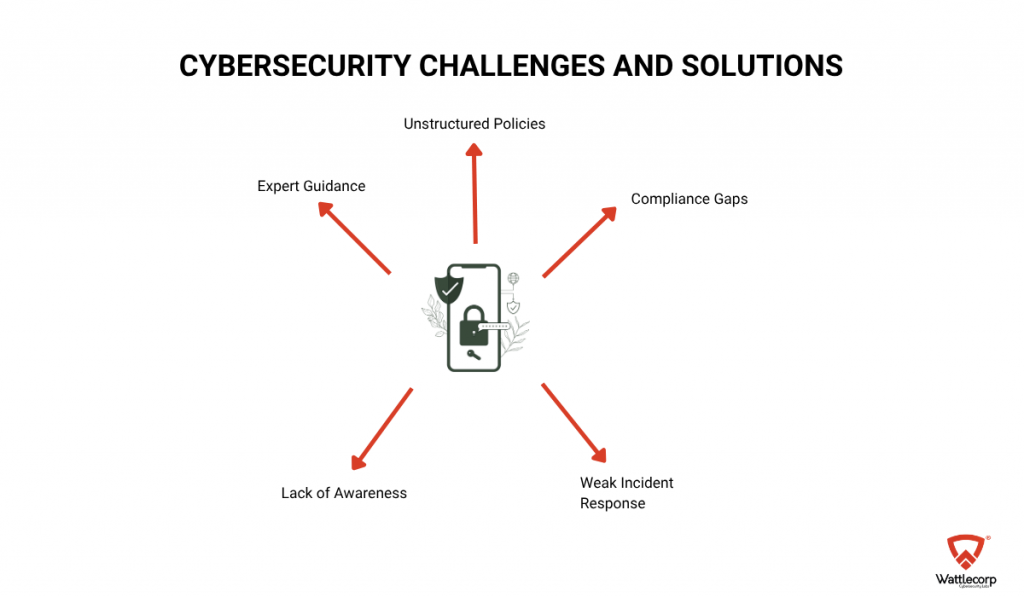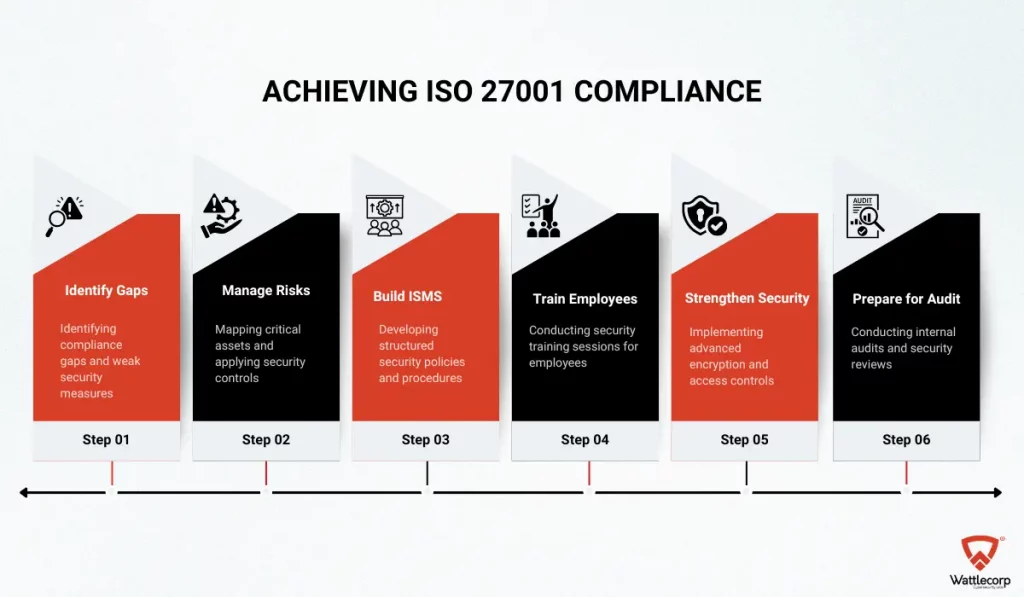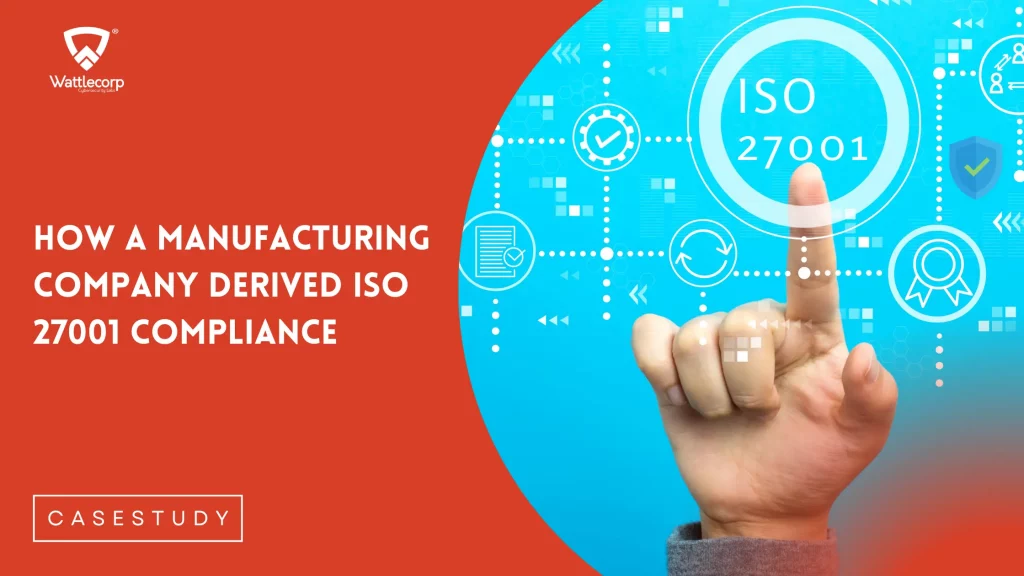How Wattlecorp Helped a Manufacturing Company Achieve ISO 27001 Compliance
A global manufacturing company wanting to strengthen its information security and achieve ISO 27001 compliance resorted to adopting a structured security framework. One, which will help them:
- Secure sensitive manufacturing data
- Obtain compliance with international security standards
- Build trust with customers and partners
Such a requirement was critical given the extent to which cyber threats are evolving.
Challenges

- Unstructured security policies – Scattered existing policies and lacking of a clear framework.
- Compliance gaps – Lack of awareness, no proper security training, etc., made it difficult for this manufacturer to meet ISO 27001 compliance requirements.
- Weak incident response – Want of adequate threat intelligence measures to detect and respond to potential security incidents.
- Lack of security awareness – No proper awareness or knowledge about cybersecurity risks and best practices on the part of the employees.
An expert guidance to fix identified gaps and achieve compliance was definitely lacking. That’s when it striked for them to partner with Wattlecorp.
The Solution
It was evident that our client faced significant challenges in its need to achieve ISO 27001 compliance. A closer look of the concerns in this regard prompted us to follow a structured approach to help this manufacturing company meet the required ISO 27001 standards.
1. Identifying Gaps
– Assessed their existing security posture
- Meticulously analysed the company’s existing security policies and controls against ISO 27001 requirements.
- Identified compliance gaps and weak security measures.
2. Managing Security Risks
– Mapped out critical assets that included:
- Proprietary manufacturing data
- Supplier details
- Customer information
- Assessed potential risks and applied security controls to protect these assets.
3. Building a Strong ISMS
– Developed a structured Information Security Management System (ISMS) Created clear security policies and procedures for:
- Protecting data
- Access control
- Appropriate Incident response
Provided a strong foundation for long-term security management.

4. Training Employees
– Conducted security training sessions to help employees:
- Promptly recognise and respond to cyber threats.
- Follow security best practices.
- Strengthen overall security awareness.
5. Strengthening Technical Security
– Implemented stronger network security and access controls
- Applied advanced encryption to safeguard sensitive data.
- Reduced both internal and external threat risks.
6. Preparing for the Audit
– Conducted internal audits and security reviews.
- Ensured that documentation and processes met ISO 27001 standards.
- Helped the company get audit-ready for a smooth external certification process.
The Result
The company successfully achieved ISO 27001 certification, which helped them derive:
- Stronger Security Governance – A well-structured ISMS gave full control over security processes.
- Better Compliance – Met international security standards and reduced regulatory risks.
- Improved Data Protection – Secured proprietary manufacturing data and customer information.
- Higher Security Awareness – Employees understood security risks and followed best practices.
- Stronger Incident Response – Achieved improved ability to detect and respond to threats.
Conclusion
ISO 27001 compliance gives businesses a competitive advantage. With this certification, the company now:
- Protects valuable data from cyber threats
- Gains trust from customers and partners
- Meets international security standards
- Reduces the risk of costly security breaches
In partnering with Wattlecorp, this manufacturing company could strengthen its security posture and ensure long-term compliance.
